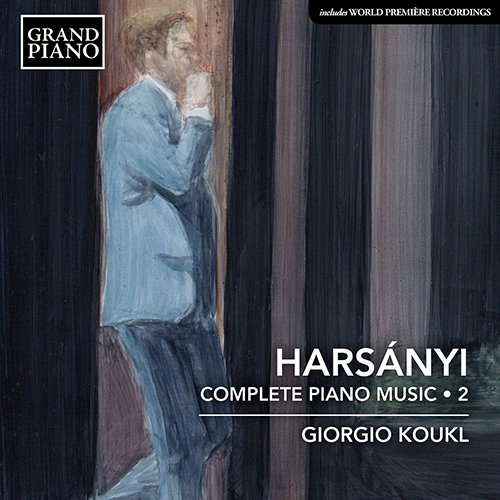
About this Release
“Tibor Harsanyi, now considered one of the most important personalities of the “École de Paris” group, remained for far too long a perfect stranger on the world's stages and concert halls. He composed virtually all of his music while in Paris and never failed to underline the importance of this city for his inspiration. As he said in an interview, “There have been more musical pieces written in this city than in the rest of the world.” It is sad to discover the that at the end of his life in post-war Paris, nobody asked for more of his music or about his whereabouts. Even the letter from the French government conceding him, after a long struggle, his French citizenship, which was refused for years with the explanation that “being a composer is not an occupation, there is a logical argument that Mr. Harsanyi is without occupation”...well, this letter arrived to his letter box probably only a few days after his death and was never opened. It has been my absolute pleasure to revive the piano music of this undeservedly neglected and brilliant composer.” — Giorgio Koukl
HARSÁNYI, TIBOR ((1898–1954)
Complete Piano Works • 2
- Giorgio Koukl, piano
The Hungarian-born composer Tibor Harsányi is now recognised as an important personality in ‘L’École de Paris’. He had a lifelong interest in modern dance, represented here by the Petite suite and Trois Pièces de danse, and he also embraced jazz, which was part of the Parisian atmosphere of the inter-war period, and other influences, while keeping the Central European rhythms and tonalities of his Hungarian origins. The Trois Pièces lyriques is a rare example of Harsányi expressing torment during the turbulent years of the Second World War.
This recording was made on a modern instrument: Steinway, Model D
Tracklist
|
3 pièces lyriques (1944) (00:14:00 )
|
|
1
No. 1. Moderato cantabile con molto espressione (00:04:05)
|
|
2
No. 2. Allegro poco agitato (00:06:07)
|
|
3
No. 3. Andante semplice (00:03:50)
|
|
3 pièces de danse (1928) (00:07:00 )
|
|
4
No. 1. Mouvement de Tango (00:02:22)
|
|
5
No. 2. Mouvement de Boston (00:03:30)
|
|
6
No. 3. Mouvement de Fox-trot (00:02:22)
|
|
Suite brève (1930) (00:08:00 )
|
|
7
I. Mouvement de Fox-trot (00:01:41)
|
|
8
II. Andante (00:01:38)
|
|
9
III. Presto (00:01:12)
|
|
10
IV. Mouvement de blue (00:01:59)
|
|
11
V. Vivace (00:01:30)
|
|
Petite suite de danses (1926) (00:12:00 )
|
|
12
I. Jeu (00:01:51)
|
|
13
II. Intimité (00:02:11)
|
|
14
III. Démence (00:03:00)
|
|
15
IV. Un Portrait (00:01:46)
|
|
16
V. Fête (00:03:12)
|
|
17
Étude (1952) (1929) (00:00:46)
|
|
Rythmes, 5 inventions pour piano (1929) (00:06:00 )
|
|
18
No. 1. Allegretto (00:01:17)
|
|
19
No. 2. Allegretto scherzando (00:00:45)
|
|
20
No. 3. Allegretto ma non troppo (00:00:57)
|
|
21
No. 4. Allegretto ritmato (00:01:37)
|
|
22
No. 5. Allegretto (00:01:09)
|
|
12 petites pièces (1927) (00:15:00 )
|
|
23
No. 1. Prélude (00:00:58)
|
|
24
No. 2. Valse (00:01:57)
|
|
25
No. 3. Mélodie (00:00:50)
|
|
26
No. 4. Marche (00:01:53)
|
|
27
No. 5. Danse (00:01:13)
|
|
28
No. 6. Chant (00:00:55)
|
|
29
No. 7. Gavotte (00:01:06)
|
|
30
No. 8. Forlane (00:01:35)
|
|
31
No. 9. Étude (00:00:52)
|
|
32
No. 10. Menuette (00:00:50)
|
|
33
No. 11. Berceuse (00:01:28)
|
|
34
No. 12. Danse paysanne (00:01:41)
|
|
35
Improvisation sur la chanson Je vais revoir ma Normandie () (00:02:25)
|
|
36
13 Danses: Fox-Trot (1929) (00:02:04)
|
|
37
Valse, Op. 2 () (00:03:01)
|
The Artist(s)
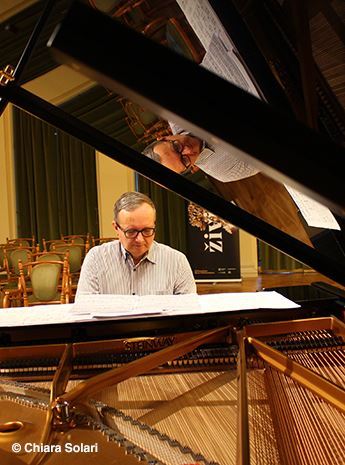 Giorgio Koukl is a Czech pianist/harpsichordist and composer. He studied at both the Conservatories of Zürich and Milan, where he took part in the masterclasses of Nikita Magaloff, Jacques Février, and Stanislaus Neuhaus, and with Rudolf Firkušný, friend and advocate of Czech composer Bohuslav Martinů. It was through Firkušný that Koukl first encountered Martinů‘s music, and is now considered one of the world’s leading interpreters of Martinů‘s piano music. As a logical continuation of this work, Koukl has recorded the complete solo piano works of Paul Le Flem, Alexander Tcherepnin, Arthur Lourié, Vítězslava Kaprálová, Witold Lutosławski, and more recently, Alexandre Tansman and Tibor Harsányi.
Giorgio Koukl is a Czech pianist/harpsichordist and composer. He studied at both the Conservatories of Zürich and Milan, where he took part in the masterclasses of Nikita Magaloff, Jacques Février, and Stanislaus Neuhaus, and with Rudolf Firkušný, friend and advocate of Czech composer Bohuslav Martinů. It was through Firkušný that Koukl first encountered Martinů‘s music, and is now considered one of the world’s leading interpreters of Martinů‘s piano music. As a logical continuation of this work, Koukl has recorded the complete solo piano works of Paul Le Flem, Alexander Tcherepnin, Arthur Lourié, Vítězslava Kaprálová, Witold Lutosławski, and more recently, Alexandre Tansman and Tibor Harsányi. The Composer(s)
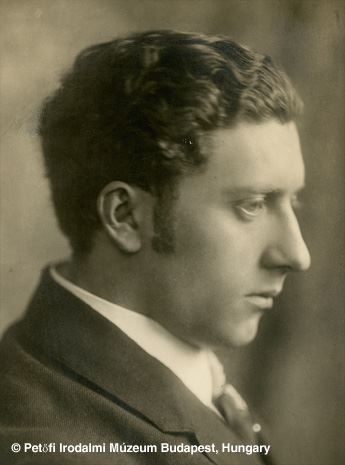 Hungarian-born pianist, composer, conductor, and musicologist Tibor Harsányi was part of the lively Paris musical scene from 1923. He was a student of Kodály in Budapest, then travelled around Europe as a performer, settling briefly in Holland, where he worked as a conductor. Harsányi was a prolific composer of chamber music, solo piano works, and songs, as well as opera and ballet.
Hungarian-born pianist, composer, conductor, and musicologist Tibor Harsányi was part of the lively Paris musical scene from 1923. He was a student of Kodály in Budapest, then travelled around Europe as a performer, settling briefly in Holland, where he worked as a conductor. Harsányi was a prolific composer of chamber music, solo piano works, and songs, as well as opera and ballet. Reviews
“This is music that is always enjoyable, sometimes delightful and occasionally brilliant. Giorgio Koukl plays it with sympathy and if anyone can help it achieve the recognition it deserves, it is he.” – MusicWeb International

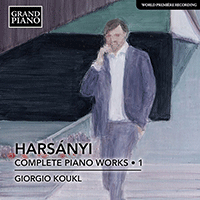
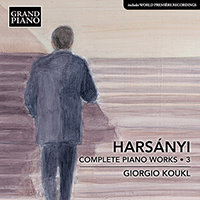
 Grand Piano has gained a reputation for producing high quality recordings of rare keyboard gems. Dedicated to the exploration of undiscovered piano repertoire, the label specialises in complete cycles of piano works by many lesser-known composers, whose output might otherwise have remained unknown and unrecorded.
Grand Piano has gained a reputation for producing high quality recordings of rare keyboard gems. Dedicated to the exploration of undiscovered piano repertoire, the label specialises in complete cycles of piano works by many lesser-known composers, whose output might otherwise have remained unknown and unrecorded.






